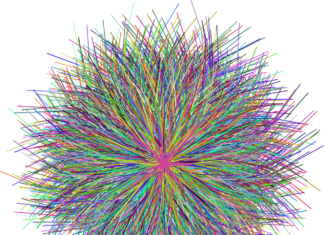Apache Kafka has emerged as a pivotal component in the world of data streaming and event-driven architecture. This robust, distributed streaming platform has revolutionized the way organizations handle and process data, offering a scalable and fault-tolerant solution for real-time data integration, event processing, and analytics. In this comprehensive guide, we will delve deep into the world of Apache Kafka, exploring its architecture, use cases, core components, and best practices for implementation.
Introduction to Apache Kafka
Apache Kafka is an open-source, distributed streaming platform that was initially developed by LinkedIn and later donated to the Apache Software Foundation. It is designed to handle large volumes of data streams in real-time, making it an ideal choice for applications requiring real-time data processing, monitoring, and analytics. Kafka has gained immense popularity due to its ability to provide reliable, fault-tolerant, and high-throughput data streaming capabilities.
The Kafka Ecosystem
Before diving into the technical details of Apache Kafka, it’s essential to understand the broader Kafka ecosystem, which encompasses a range of tools and libraries designed to extend Kafka’s functionality and ease its integration into various data pipelines. Some key components of the Kafka ecosystem include:
Apache Kafka is a distributed streaming platform that has gained immense popularity in recent years for its ability to handle real-time data streams at scale. This open-source software was originally developed by LinkedIn and later donated to the Apache Software Foundation, where it has continued to evolve and flourish. Kafka’s architecture and capabilities make it a fundamental building block for building data-intensive, event-driven applications in various domains, from financial services to e-commerce, and from social media to IoT. In this comprehensive overview, we will delve deep into Apache Kafka, exploring its key components, architecture, use cases, and the role it plays in modern data processing pipelines.
Kafka: The Core Concepts
Before diving into the technical intricacies of Apache Kafka, it’s essential to grasp the core concepts that underpin its design and functionality. Kafka is primarily designed to handle the continuous flow of data in the form of events or messages. These events can be generated by various sources, such as applications, sensors, or devices, and Kafka provides a reliable, fault-tolerant mechanism for capturing, storing, and processing this data.
1. Topics and Partitions
At the heart of Kafka are topics and partitions. Topics are logical channels that allow you to categorize and organize events based on their type or purpose. For example, you might have topics for user activity logs, system metrics, or product transactions. Each topic is further divided into partitions, which are the fundamental unit of parallelism and scalability in Kafka.
Partitions are where the data is actually stored, and they enable Kafka to distribute and process data in a distributed manner across multiple servers or nodes. Each partition is an ordered, immutable sequence of events, and Kafka ensures that data within a partition is retained for a configurable period. Partitions also serve to distribute the data load and allow for concurrent processing.
2. Producers
Producers are responsible for publishing events to Kafka topics. They collect data from various sources and send it to Kafka brokers, which are the Kafka server instances responsible for receiving, storing, and managing the data. Producers can publish events to one or more topics, and they typically follow a publish-subscribe pattern. As data is ingested by producers, it is appended to the appropriate partition of the specified topic.
3. Consumers
On the other side of the Kafka ecosystem, consumers subscribe to one or more topics and read events from the partitions. Consumers enable data processing, analysis, and integration with downstream systems. They can be grouped together into consumer groups for load balancing and parallel processing. Kafka ensures that each event is consumed in the order it was written to the partition, providing strong guarantees on event sequencing.
4. Brokers and Clusters
Kafka brokers are individual Kafka server instances that manage the storage and retrieval of events. These brokers collectively form a Kafka cluster, which provides fault tolerance and scalability. Clusters can consist of multiple brokers distributed across different servers or even data centers, ensuring high availability and durability.
5. ZooKeeper (Legacy)
In earlier versions of Kafka (prior to 2.8.0), Apache ZooKeeper played a critical role in managing cluster metadata, leader election, and coordination. However, Kafka has been moving towards removing its dependency on ZooKeeper for various operational reasons, making Kafka more self-sufficient and easier to manage. With the introduction of the Kafka Controller, ZooKeeper’s role has been significantly reduced.
6. Kafka Connect and Kafka Streams
Beyond the core components, Kafka offers two important extension frameworks:
Kafka Connect: This framework simplifies the integration of Kafka with external systems. Kafka Connectors are readily available to connect Kafka to various data sources and sinks, such as databases, cloud services, and more. It allows for real-time data movement into and out of Kafka topics, enabling seamless data pipelines.
Kafka Streams: Kafka Streams is a powerful stream processing library built on top of Kafka. It allows developers to create real-time applications that can transform, aggregate, and analyze data within Kafka topics. Kafka Streams simplifies the development of event-driven applications, making it easier to work with real-time data.
Consumers are responsible for reading and processing data from Kafka topics. Kafka allows multiple consumers to work together efficiently through the concept of consumer groups. When consumers join a group, Kafka ensures that each partition of a topic is consumed by only one member of the group at a time. This design provides both load balancing and fault tolerance.
Consumer groups are particularly valuable in scenarios where a high volume of data needs to be processed in parallel. For example, in a log processing application, you might have multiple consumers within a group reading logs from different partitions of the same topic. This parallelism allows for efficient and real-time data processing.
Kafka’s consumer groups also support dynamic membership. New consumers can join a group, and existing ones can leave without disrupting the data flow. If a consumer fails, its partitions are automatically reassigned to other consumers in the same group. This automatic rebalancing ensures continuous data consumption and fault tolerance.
Kafka provides configurable options for data retention and cleanup, allowing organizations to manage storage costs and comply with data retention policies. Each partition in Kafka has a retention policy, which specifies how long data should be retained before it is eligible for deletion.
The retention policy can be set based on time (e.g., retain data for seven days) or size (e.g., retain data until the partition reaches a specific size limit). Kafka automatically removes old data that exceeds the configured retention period or size limit, making room for new incoming data.
Additionally, Kafka supports the concept of log compaction, which is especially useful for maintaining the latest state of data for certain use cases like maintaining a changelog or database snapshot. With log compaction, Kafka ensures that for each key in a partition, only the latest event is retained, allowing consumers to retrieve the most recent state of a specific entity.
Fault tolerance is a critical aspect of Kafka’s design. It ensures that data remains available and durable even in the face of hardware failures or network issues. Kafka achieves fault tolerance through data replication.
In a Kafka cluster, each partition is replicated across multiple brokers. Within each replica set, one broker serves as the leader, handling all read and write requests for that partition. The other brokers in the replica set act as followers, replicating data from the leader. If a leader broker fails, one of the followers is elected as the new leader, ensuring continuous data availability.
Replication also plays a role in ensuring data durability. Data is not considered committed until it has been replicated to a configurable number of in-sync replicas (ISRs). This ensures that even if a broker fails immediately after acknowledging a write, the data is still recoverable from the in-sync replicas.
In earlier versions of Kafka, Apache ZooKeeper played a critical role in managing cluster metadata, leader election, and coordination. However, Kafka has been gradually reducing its dependence on ZooKeeper to simplify operations. With the introduction of the Kafka Controller, many of the tasks previously handled by ZooKeeper have been taken over by Kafka itself.
The Kafka Controller is a specialized broker responsible for managing leadership and partition assignments. It monitors the health of brokers and handles tasks such as leader election and partition reassignment. This architecture shift reduces the operational complexity of managing Kafka clusters.






















